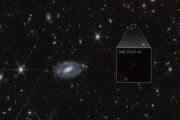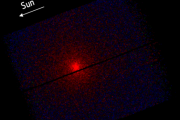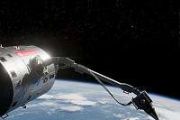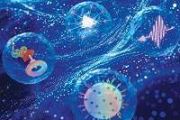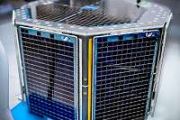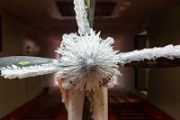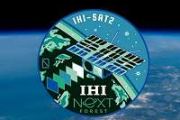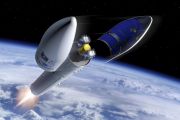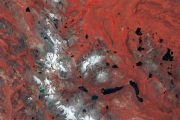
Copernical Team
Ariane 6 launches Curium One: space for all

Europe’s newest rocket soon launches, taking with it many space missions each with a unique objective, destination and team at home, cheering them on. Whether into Earth orbit to look back and study Earth, peer out to deep space or test important new technologies, Ariane 6’s first flight will showcase the versatility and flexibility of this impressive, heavy-lift launcher. Read on for all about Curium One, then see who else is flying first.
Watery Planets Orbiting Dead Stars Could Be Good Candidates for Life Study
 The small footprint and dim light of white dwarfs, remnants of stars that have burned through their fuel, may make excellent backdrops for studying planets with enough water to harbor life.
The challenge lies in detecting the shadow of a planet against a former star that has shrunk significantly and ensuring that it has maintained its water oceans for billions of years, even after enduring
The small footprint and dim light of white dwarfs, remnants of stars that have burned through their fuel, may make excellent backdrops for studying planets with enough water to harbor life.
The challenge lies in detecting the shadow of a planet against a former star that has shrunk significantly and ensuring that it has maintained its water oceans for billions of years, even after enduring Pair Plasmas Generated in Laboratory Setting
 Black holes and neutron stars are among the densest known objects in the universe. Within and around these environments exist plasmas, the fourth state of matter alongside solids, liquids, and gases. Specifically, these plasmas are known as relativistic electron-positron pair plasmas because they consist of electrons and positrons moving at nearly the speed of light.
While these plasmas ar
Black holes and neutron stars are among the densest known objects in the universe. Within and around these environments exist plasmas, the fourth state of matter alongside solids, liquids, and gases. Specifically, these plasmas are known as relativistic electron-positron pair plasmas because they consist of electrons and positrons moving at nearly the speed of light.
While these plasmas ar Mitsubishi Electric to Ship GaN MMIC Power Amplifier Samples for Ka-band SATCOM
 Mitsubishi Electric Corporation (TOKYO: 6503) announced today that it will begin shipping samples of 8W and 14W gallium nitride (GaN) monolithic microwave integrated circuit (MMIC) power amplifiers for use in Ka-band satellite-communication (SATCOM) earth stations from July 1.
While the mainstream frequency for satellite communications is currently the Ku-band (13GHz to 14GHz), the higher
Mitsubishi Electric Corporation (TOKYO: 6503) announced today that it will begin shipping samples of 8W and 14W gallium nitride (GaN) monolithic microwave integrated circuit (MMIC) power amplifiers for use in Ka-band satellite-communication (SATCOM) earth stations from July 1.
While the mainstream frequency for satellite communications is currently the Ku-band (13GHz to 14GHz), the higher Voyager 1 Resumes Full Science Operations
 The spacecraft has resumed gathering information about interstellar space.
NASA's Voyager 1 spacecraft is conducting normal science operations for the first time following a technical issue that arose in November 2023.
The team partially resolved the issue in April when they prompted the spacecraft to begin returning engineering data, which includes information about the health and s
The spacecraft has resumed gathering information about interstellar space.
NASA's Voyager 1 spacecraft is conducting normal science operations for the first time following a technical issue that arose in November 2023.
The team partially resolved the issue in April when they prompted the spacecraft to begin returning engineering data, which includes information about the health and s NASA's Perseverance Reaches Key Scientific Target in Ancient Riverbed
 Initially considered a simple route free of obstructions, Neretva Vallis has presented numerous geological opportunities for the science team.
After navigating through a dune field to avoid challenging boulders, NASA's Perseverance Mars rover arrived at its latest area of interest on June 9. The route change not only reduced travel time to the "Bright Angel" site by several weeks but also
Initially considered a simple route free of obstructions, Neretva Vallis has presented numerous geological opportunities for the science team.
After navigating through a dune field to avoid challenging boulders, NASA's Perseverance Mars rover arrived at its latest area of interest on June 9. The route change not only reduced travel time to the "Bright Angel" site by several weeks but also Ovzon Introduces New Mobile Satellite Terminals
 Ovzon has announced the launch of two new mobile satellite terminals, the Ovzon P20 and Ovzon P30. These ruggedized parabolic broadband terminals are designed for use in land, maritime, and airborne applications.
The new terminals were developed with a focus on performance, mobility, and resiliency. They offer a variety of integration options, enhancing Ovzon's SATCOM-as-a-Service offering
Ovzon has announced the launch of two new mobile satellite terminals, the Ovzon P20 and Ovzon P30. These ruggedized parabolic broadband terminals are designed for use in land, maritime, and airborne applications.
The new terminals were developed with a focus on performance, mobility, and resiliency. They offer a variety of integration options, enhancing Ovzon's SATCOM-as-a-Service offering Kayhan Space Launches Comprehensive Spaceflight Intelligence Platform
 Kayhan Space has launched Satcat.com, a spaceflight intelligence exchange that aggregates historical and real-time data for objects and events in Earth's orbit. Satcat is designed for a wide range of users, from space enthusiasts to industry experts, offering a single platform for researching, analyzing, and referencing space-related data.
While many resources provide essential information
Kayhan Space has launched Satcat.com, a spaceflight intelligence exchange that aggregates historical and real-time data for objects and events in Earth's orbit. Satcat is designed for a wide range of users, from space enthusiasts to industry experts, offering a single platform for researching, analyzing, and referencing space-related data.
While many resources provide essential information Ovzon 3 satellite reaches geostationary orbit
 Ovzon's proprietary satellite Ovzon 3 has reached its orbital position in the geostationary arc after a five-month journey. Initial tests conducted by manufacturing partner Maxar have been completed, and the satellite, including the Ovzon On-Board-Processor, will soon be handed over to Ovzon for further in-orbit testing. The satellite is expected to enter commercial service mid-year 2024, as pla
Ovzon's proprietary satellite Ovzon 3 has reached its orbital position in the geostationary arc after a five-month journey. Initial tests conducted by manufacturing partner Maxar have been completed, and the satellite, including the Ovzon On-Board-Processor, will soon be handed over to Ovzon for further in-orbit testing. The satellite is expected to enter commercial service mid-year 2024, as pla NASA Transitions Hubble to One-Gyro Mode for Continued Science Operations
 NASA successfully transitioned operations for the agency's Hubble Space Telescope to an alternate operating mode that uses one gyro, returning the spacecraft to daily science operations Friday. The telescope and its instruments are stable and functioning normally.
Hubble went into safe mode May 24 due to an ongoing issue with one of its gyroscopes (gyros), which measure the telescope's sle
NASA successfully transitioned operations for the agency's Hubble Space Telescope to an alternate operating mode that uses one gyro, returning the spacecraft to daily science operations Friday. The telescope and its instruments are stable and functioning normally.
Hubble went into safe mode May 24 due to an ongoing issue with one of its gyroscopes (gyros), which measure the telescope's sle 





